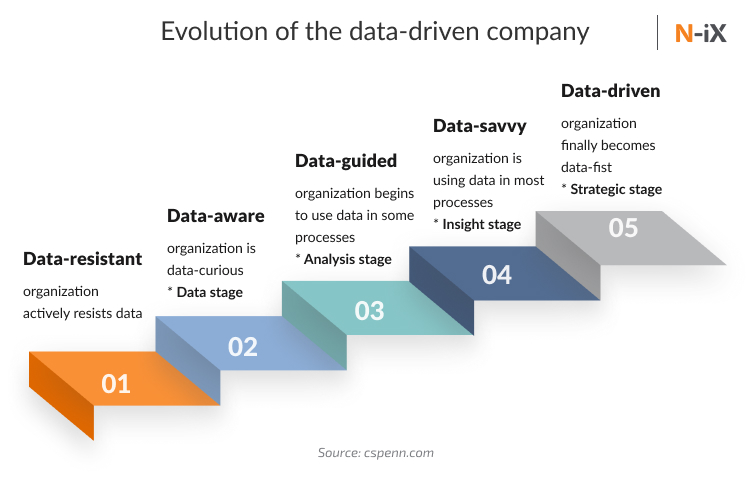
How to Implement Business Intelligence Software with Ease
In today’s fast-paced and competitive business landscape, organizations are constantly seeking ways to gain a competitive edge and make informed decisions. One effective way to achieve this is by implementing Business Intelligence (BI) software. BI software enables companies to collect, analyze, and visualize data from various sources, providing valuable insights that can drive business growth and improvement. However, implementing BI software can be a daunting task, especially for those who are new to the technology. In this article, we will provide a step-by-step guide on how to implement BI software with ease.
Understanding Business Intelligence Software
Before we dive into the implementation process, it’s essential to understand what Business Intelligence software is and how it can benefit your organization. BI software is a set of tools and technologies that enable companies to transform raw data into meaningful and actionable insights. It allows businesses to analyze data from various sources, identify trends and patterns, and create visualizations to communicate insights to stakeholders.
Benefits of Business Intelligence Software
The benefits of implementing BI software are numerous. Some of the most significant advantages include:
- Improved Decision-Making: BI software provides organizations with accurate and timely insights, enabling them to make informed decisions that drive business growth and improvement.
- Enhanced Operational Efficiency: BI software automates many manual processes, freeing up resources and allowing companies to focus on strategic initiatives.
- Increased Revenue: By analyzing customer behavior and preferences, businesses can identify opportunities to increase revenue and improve customer satisfaction.
- Competitive Advantage: Organizations that implement BI software can gain a competitive edge by making data-driven decisions and staying ahead of the competition.
Preparing for Implementation
Before implementing BI software, it’s crucial to prepare your organization for the change. Here are some steps to take:
- Define Business Objectives: Identify the business objectives and goals that you want to achieve through BI software implementation.
- Assess Data Quality: Evaluate the quality and accuracy of your data to ensure that it’s reliable and suitable for analysis.
- Identify Stakeholders: Determine who will be using the BI software and what their requirements are.
- Develop a Project Plan: Create a project plan that outlines the scope, timeline, and budget for the implementation.
Selecting the Right BI Software
Choosing the right BI software is critical to the success of your implementation. Here are some factors to consider:
- Functionality: Ensure that the software provides the features and functionality that meet your business needs.
- Scalability: Select a software that can grow with your organization and handle increasing data volumes.
- User Experience: Choose a software that is user-friendly and provides an intuitive interface.
- Integration: Ensure that the software can integrate with your existing systems and data sources.
Implementation Steps
Once you’ve prepared your organization and selected the right BI software, it’s time to start the implementation process. Here are the steps to follow:
- Data Integration: Integrate your data sources into the BI software, ensuring that all data is accurate and up-to-date.
- Data Modeling: Create a data model that defines the relationships between different data entities.
- Report Development: Develop reports and dashboards that provide insights into your business operations.
- Testing and Quality Assurance: Test the BI software to ensure that it’s functioning correctly and providing accurate insights.
- Training and Support: Provide training and support to stakeholders to ensure that they can effectively use the BI software.
Best Practices for Successful Implementation
To ensure a successful BI software implementation, follow these best practices:
- Start Small: Begin with a pilot project to test the software and identify any issues.
- Involve Stakeholders: Engage stakeholders throughout the implementation process to ensure that their needs are met.
- Monitor Progress: Regularly monitor progress and adjust the project plan as needed.
- Provide Ongoing Support: Offer ongoing training and support to stakeholders to ensure that they can effectively use the BI software.
- Continuously Evaluate and Improve: Regularly evaluate the BI software and identify opportunities for improvement.
Common Challenges and Solutions
During the implementation process, you may encounter some common challenges. Here are some solutions to help you overcome them:
- Data Quality Issues: Develop a data quality framework to ensure that data is accurate and reliable.
- Resistance to Change: Communicate the benefits of BI software to stakeholders and provide training and support to help them understand the value.
- Technical Issues: Ensure that your IT infrastructure can support the BI software and provide ongoing technical support.
- Cost Overruns: Develop a detailed project plan and budget to ensure that costs are managed effectively.
Conclusion
Implementing Business Intelligence software can be a complex process, but with the right approach, it can be done with ease. By understanding the benefits of BI software, preparing your organization, selecting the right software, and following the implementation steps, you can unlock the full potential of your data and drive business growth and improvement. Remember to follow best practices, monitor progress, and provide ongoing support to stakeholders to ensure a successful implementation. With the right BI software and a well-planned implementation, you can make informed decisions, improve operational efficiency, and gain a competitive edge in the market.
Closure
Thus, we hope this article has provided valuable insights into How to Implement Business Intelligence Software with Ease. We thank you for taking the time to read this article. See you in our next article!


